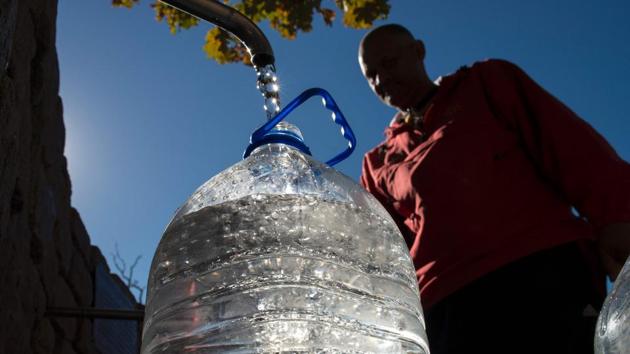Microplastic found in tap water across the world, study shows New Delhi affected
An investigation by Orb Media, which collected samples from more than a dozen countries, said microplastics have been shown to absorb toxic chemicals linked to cancer and other illnesses, and then release them when consumed by fish and mammals.
Microplastic has penetrated tap water in countries across the world, with a study showing that 82% of the samples surveyed in New Delhi are contaminated with particles smaller than five millimeters in size.

The investigation by Orb Media, which collected samples from more than a dozen countries, said microplastics have been shown to absorb toxic chemicals linked to illnesses, and then release them when consumed by fish and mammals.
“Scientists say these microscopic fibers might originate in the everyday abrasion of clothes, upholstery, and carpets. They could reach your household tap by contaminating local water sources, or treatment and distribution systems. But no one knows, and no specific procedures yet exist for filtering or containing them,” the investigation, based on the final report published on May 16, said.
Governments across the globe don’t have any standards on safe threshold for plastic in water and food, according to the report. “The first studies into the health effects of microscopic plastics on humans are only just now beginning,” it said.
Delhi Jal Board CEO Keshav Chandra said there was no valid study yet on what impact microplastic has on the human body. “There are hardly few studies yet on this source. There are 90 parameters, which have been issued by the World Health Organization, for which water is checked by us. It doesn’t mention microplastic yet. Gradually, as we realise the impact, the WHO will issue parameters for this and then all water utilities will follow it,” he told Hindustan Times.
The US has the highest contamination rate of 94%, according to the study. Lebanon and India have the next highest rates of microplastic. European countries including France, Germany and the UK have the lowest contamination rate of 72%.
In India, more than 130 million people live in areas where groundwater supplies are contaminated, according to the World Resources Institute. More than 20 million people live in areas where supplies contain at least three pollutants exceeding safe limits, its analysis shows.
Adventure Scientists, a nonprofit based in the US, says microplastic poses a significant environmental risk when it enters our waterways. Microplastics have several sources -- they’re laundered from nylon clothing, they wash down the drain with many cosmetics and toothpastes, and they weather from debris like bottles and bags, it says.
According to a 2014 study published in a Public Library of Science journal, there are more than five trillion pieces of plastic floating in the world’s oceans.
Experts say if microplastic is in water, it will likely be found in items of daily use in kitchens and groceries. “Plastic fibers may leaven your pizza crust, and a forthcoming study says it’s likely in the craft beer you’ll drink to chase the pepperoni down,” the Orb Media report says.
To make matters worse, plastic is not biodegradable. “...it only breaks down into smaller pieces of itself, even down to particles in nanometer scale — one-one thousandth of one-one thousandth of a millimeter. Studies show particles of that size can migrate through the intestinal wall and travel to the lymph nodes and other bodily organs.”
Marine experts fear there could be more plastic than fish in the ocean by 2050 by weight, according to a factsheet by a UK-based charity, the Ellen MacArthur Foundation.
Researcher Mary Kosuth said about the Orb Media investigation’s laboratory process: “Since this is the first global tap water survey of plastic pollution to have been completed, the results of this study serve as an initial glimpse at the consequences of human plastic use [and] disposal rather than a comprehensive assessment of global plastic contamination.. These results call for further testing within and between regions.”
Fifty per cent of the samples worldwide were from tap water participants used for drinking. The other 50% came from tap water residents considered unfit to drink straight from the tap, if at all.
With inputs from Ritam Halder




